After the huge success and dominance of the Redmi Note 7 series by Xiaomi, it has recently launched the newer and better Redmi Note 8 series in Nepal for a very competitive price tag. Among the two phones launched, Redmi Note 8 Pro is the top of the lineup.
Key Highlights:
- Display: 6.53-inch (2340×1080) IPS LCD
- Chipset: 2.05GHz MediaTek Helio G90T
- RAM: 6GB/8GB
- Storage: 64GB/128GB
- Rear Camera: 64MP, ƒ/1.9 (primary) | 8MP, ƒ/2.2 (wide-angle) |2MP, ƒ/2.4 (portrait) | 2MP, ƒ/2.4 (macro)
- Front Camera: 20MP, ƒ/2.0
- Software: Android 9.0 Pie
- Battery: 4500mAh, 18W
- Security: Rear fingerprint
- Colors: Gamma Green, Halo White, Shadow Black
Review Price:
- 6GB RAM + 64 GB Storage : Rs.27000
- 6GB RAM + 128GB Storage : Rs. 30000
- 8GB RAM + 128GB Storage : Rs. 33000
Redmi Note 8 Pro: Build and Design
With the protection of Corning Gorilla Glass 5, note 8 Pro has a glossy and stylish finish making it look aesthetic to the eyes. Although to favor the budget, the phone has plastic framing instead of metallic. The back surface is not flat but has curves to make it feel more comfortable on the hand. The only bummer is the quad-camera bump which makes the phone wobble when placed on a flat surface and it further houses the physical fingerprint sensor within the bump that takes some time to get used to. The vertical camera bump on the back houses 3 sensors with the fourth sensor and Dual Tone flash placed just on its right. There’s also a vertical Redmi logo on the back.
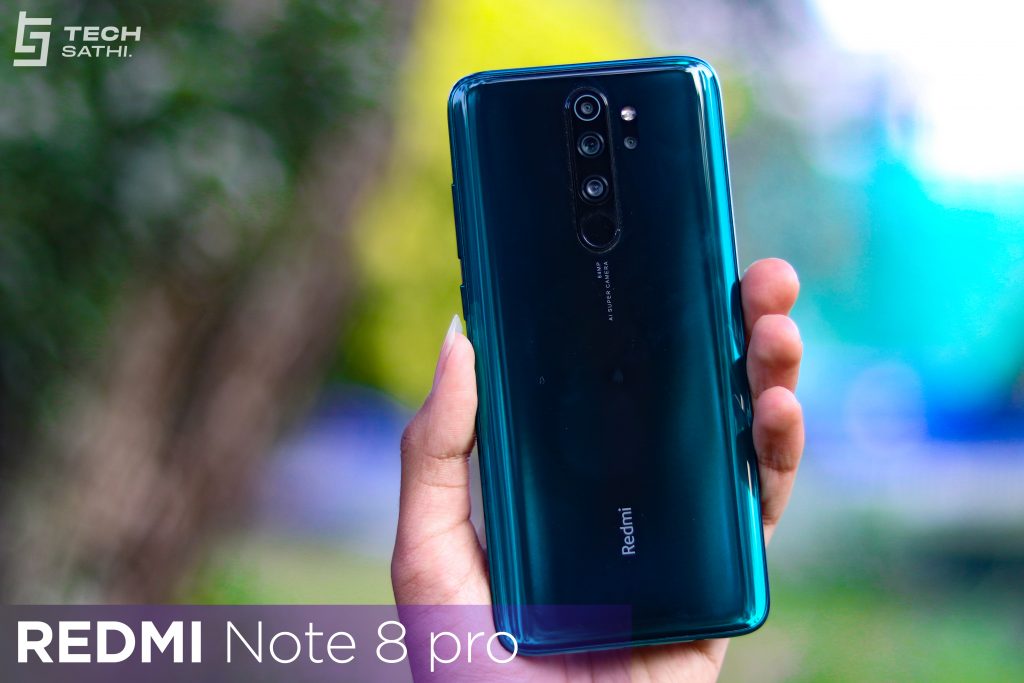
On the front, we have a waterdrop notch that houses the front camera sensor. On the top, you get a noise-canceling earpiece and an IR blaster. On the right, there are power and volume buttons. On the left, we have two trays. One of the trays has two slots, one for a nano-SIM card and the other for a Micro-SD card slot of up to 256GB. The other tray has a single slot for a nano-SIM card. On the bottom, there’s a USB 2.0 Type-C port with single downward-firing speaker grills and primary microphone for calls on its right and our beloved headphone jack on its left.
The device being large and a little heavy at 200 grams, I wouldn’t recommend it for one-handed use. A back case will probably help you out with the camera bump and slipperiness of the phone.
The phone has no official waterproof certification but the company claims it to have p2i coating making it splash and dustproof.
Redmi Note 8 Pro: Display and Other Features
Note 8 Pro has a large 6.53-inch IPS LCD 1080p display as compared to its predecessor Note 7 Pro’s 6.3 inches. Though the screen is not AMOLED, the colors are vibrant and punchy with enough details and contrast. The brightness is very good reaching about 450 nits with the manual slider and about 500+ nits on Auto Mode when the screen is exposed to a brighter or sunny environment. We don’t get an always-on display, it not being an AMOLED, but there’s a notification LED on the waterdrop notch to keep you notified. The bezels and the chin are also thinner than its previous model.
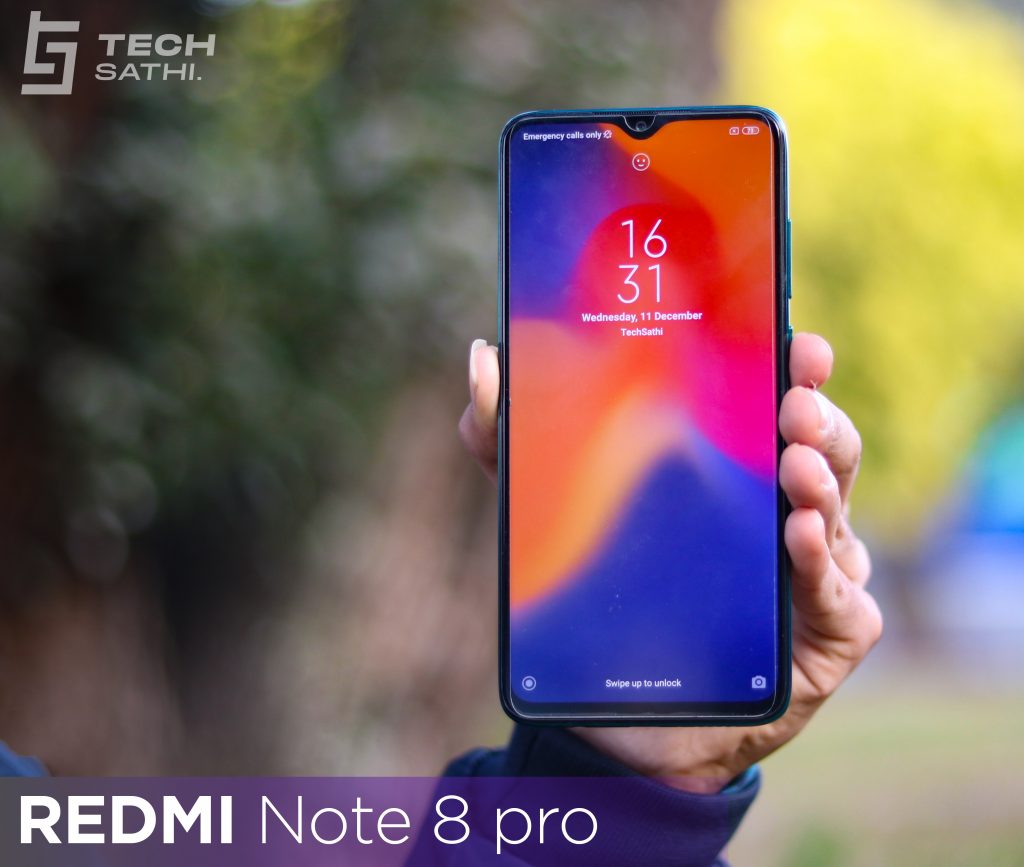
We get a fast Face Unlock and Lift-To-Wake function but it isn’t as fast and secure as the physical fingerprint sensor. The single downward-firing loudspeaker is more improved than before but there are better competitors out in the market. It doesn’t mean that the sound quality is anything to compromise on. Although, I would recommend you to make use of the headphone jack to enjoy your content.
The phone also has all the sensors needed like accelerometer, gyro, proximity, and compass.
Oh! And you also get an extra AI in your pocket that is the built-in Alexa. Alexa adapts to your voice and Amazon account to help you with your day to day queries and shopping as well. Hands-free Alexa option is a bonus when your device is locked.
Sadly, the variants available in Nepal are the Indian Variants which do not have NFC to support mobile payments.
Redmi Note 8 Pro: Software and Performance
The phone runs on MIUI 10 based on Android Pie. Though MIUI lacks the app drawer and has some ads and bloatware, I didn’t experience any hassle in my 15 days of usage. The user interface is smooth and intuitive and will likely get better with the MIUI 11 update as it has already started rolling out in India. You also get system-wide Dark mode support already but it won’t save you any power, the screen being LCD.
MediaTek made a huge comeback in the smartphone processor category with this phone’s MediaTek G90T chipset optimized for gaming and it doesn’t disappoint at all. Combined with 6GB or 8GB of RAM, the phone runs like a beast topping the benchmarks with flying colors. Here is what we got on your benchmark results. We were able to run Call of Duty, PUBG and Asphalt 9 all on their highest settings and experienced no thermal throttling or frame drops during our extensive 4-5 hours gaming sessions. The critics are pretty much wrong here as the highest temperature the device went was around 38-40 degrees Celsius. Even if it feels a little hot on its bareback edges sometimes, the internal liquid cooling brings the temperature down pretty quick. If you get frame drops in PUBG, it is not because the device is lagging, it is probably due to the bad optimization of the game. Comparing with Poco F1 and Realme XT, the haptic touch was not as impressive as advertised but it’s certainly better.
Redmi Note 8 Pro: Battery
To support the impressive performance, the phone has a decent 4500mAh battery with an 18W fast charger provided in the box. On our standard video loop test, in airplane mode and 75% brightness, the phone lasted around 16 hours 10 minutes. With PUBG gaming on highest settings and max brightness with earphones plugged in, the battery pack lost its weight by about 20-22% in an hour. On our PC Mark battery test 2.0, we got a score of around 11 hours and 30 minutes. This should give you foresight on this device’s good enough battery backup but the fast charging is there to get you running again in no time. We were able to fill its empty belly with the 18W fast charger in just under 2 hours.
Redmi Note 8 Pro: Camera
This is the best-selling point for this device as it is the world’s first phone to house a 64MP primary sensor. Talking about its quad-camera setup, we get a 64MP f/1.8 main sensor, 8MP f/2.2 ultrawide sensor, 2 MP f/2.4 macro sensor, and 2 MP f/2.4 depth sensor. The front notch houses a 20MP f/2.0 selfie shooter. Let’s take a look at the samples and decide for your own how well this camera is able to live up to its hype. The photos from the main sensor which is pixel binned to a traditional 12MP picture are quite detailed with good dynamic range and so are the pictures were taken with 2x standard zoom. Further than that, the pictures start to pixelate and the software starts to soften the details quite a bit. We have a separate option for 64MP and when shot with it, I didn’t find much difference in the dynamic range but in the pixel quality when zoomed in as compared with the standard 12MP photos. You can get a 3.26m tall poster printing for your 64MP shots as claimed by the company but sadly I didn’t try that.
The portraits come out great in good lighting conditions and the depth sensor along with the software optimization helps you control the amount of your background blur. HDR does its job pretty well and AI mode helps to bring out the best of your shots on various occasions and saves the hassle of post-editing pictures. There are beauty mode and filters built-in the camera app but I wouldn’t recommend it as the beauty mode makes the pictures soft and a little smudgy. It is better to post edit your pictures using Lightroom, Snapseed, etc.
The dedicated macro sensor helps you take really close up shots and I mean really close up ones which are not possible with the main sensor but it isn’t as detailed as expected. The ultrawide sensor helps you capture more of everything but it would be so much better if it could maintain the image optimization similar to the main sensor like in the iPhones. When you switch to ultrawide from the main sensor, you will notice a great difference in image processing which may bother you sometimes.
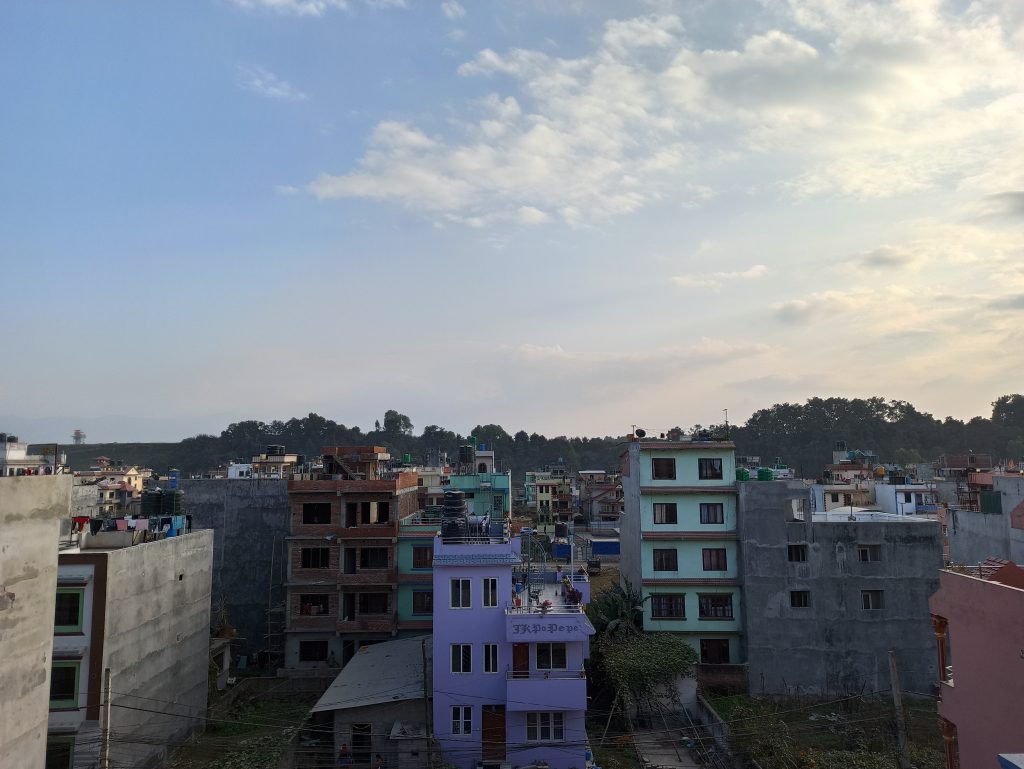
Normal 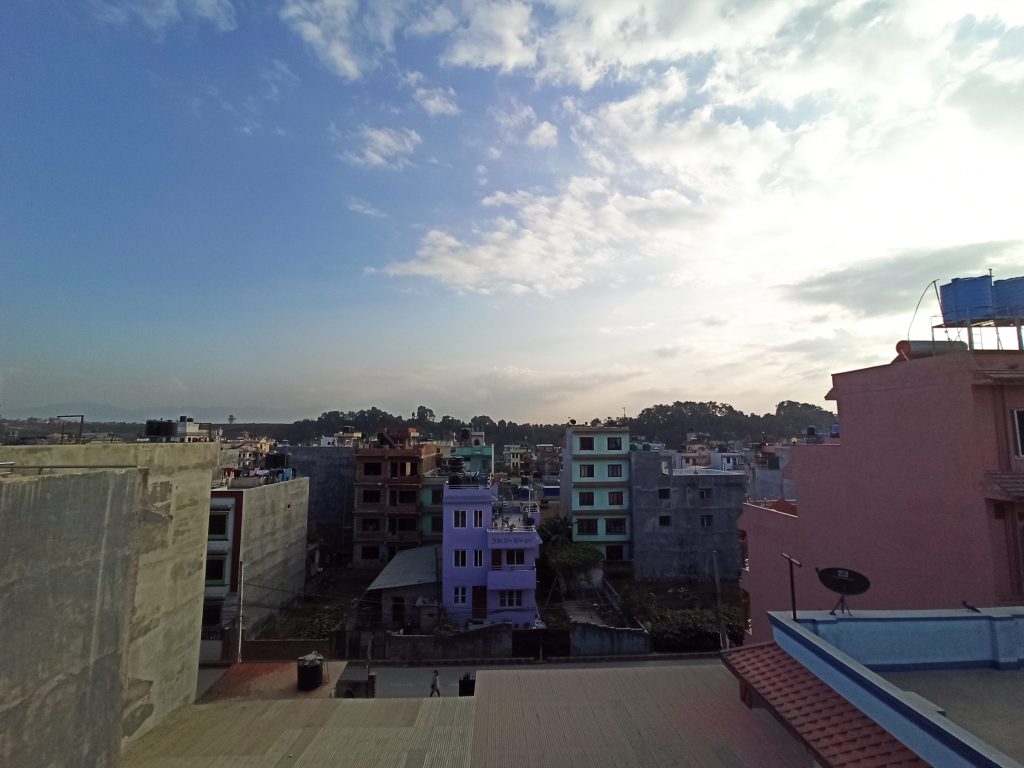
UltraWide
The selfie shooter shoots great detailed pictures in good lighting conditions and selfie portraits are also decent but the edge-detection and blur seem a little aggressive as compared with the main sensor’s portraits.
Talking about night mode, it works. It is not as good as the iPhone, Pixels or even Huawei Nova 5T that we reviewed before but it does the job in bringing out the highlights, minimizing light glares, increasing contrast and details and making the picture less noisy. Unfortunately, the night mode only works with the main sensor and in the 2x zoom mode.
The max video supported is 4K at 30fps and the EIS (Electronic Image Stabilization) isn’t good. If you want to use those clips for social media, I highly recommend a smartphone gimbal or at least a tripod. You can also shoot slow-motion videos of up to 1080p at 120fps and 720p at 960fps.
The selfie video is pretty average and I would not recommend it for vlogging.
Oh! You do get a bonus feature of recording with the macro and ultrawide sensor but the quality isn’t that impressive. Another downside is not being able to switch camera sensors while recording a video.
Other features in the camera app are Short video with speed control and built-in emoji filters for social media stories, horizontal Panorama and Pro mode to tweak with Shutter Speed, ISO, White Balance and Focus as per your choices. You can try getting decent night mode pictures with the ultra-wide sensor by increasing the shutter speed in Pro mode.
Redmi Note 8 Pro Review: Should you buy it?
Well, the Redmi 8 series just made a record of 10M units sold in 3 months globally. So, there’s no denying that there is no other phone better than this at this price segment in Nepal for now. If Realme XT was officially available in Nepal, it would be able to compete with the Note 8 Pro but in the end, if you look at the comparisons online, you will clearly find out that the Note 8 Pro is a tough one to beat. For now, close your eyes and buy it already or wait for newer models to arrive from various companies. It’s all up to you to decide.


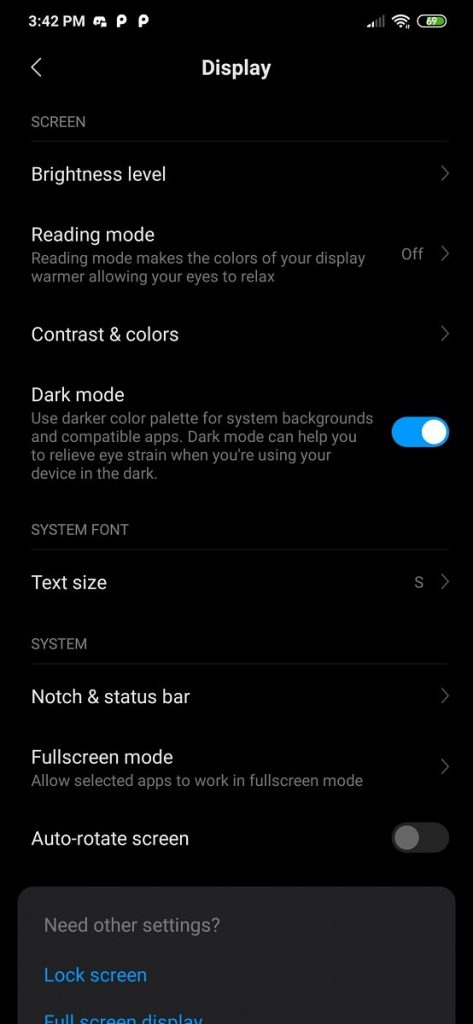
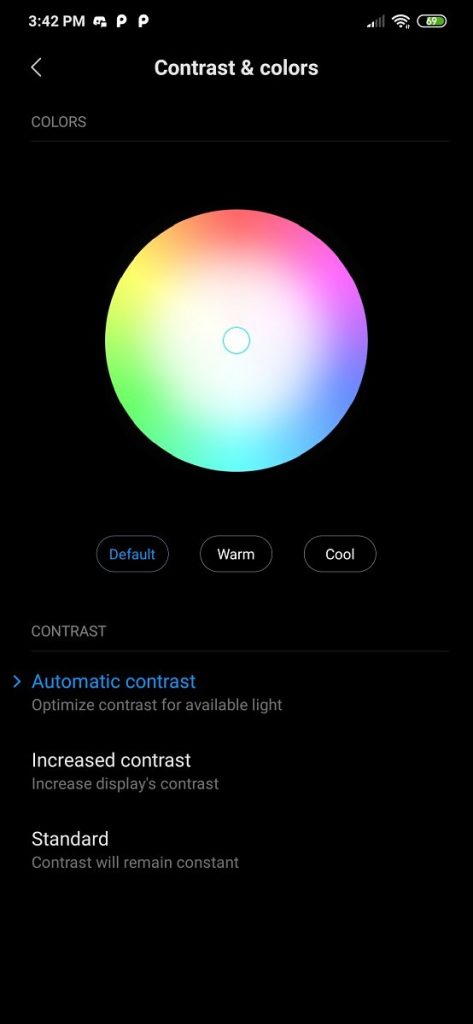
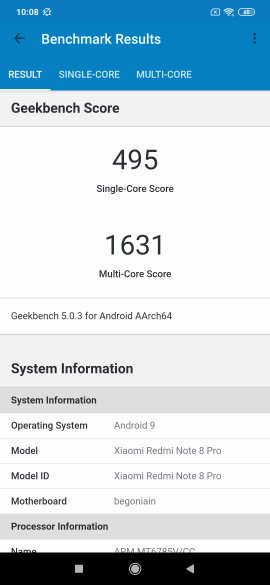
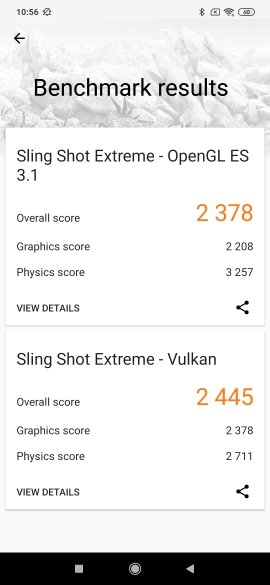
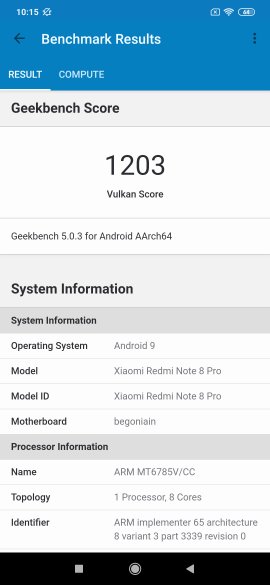
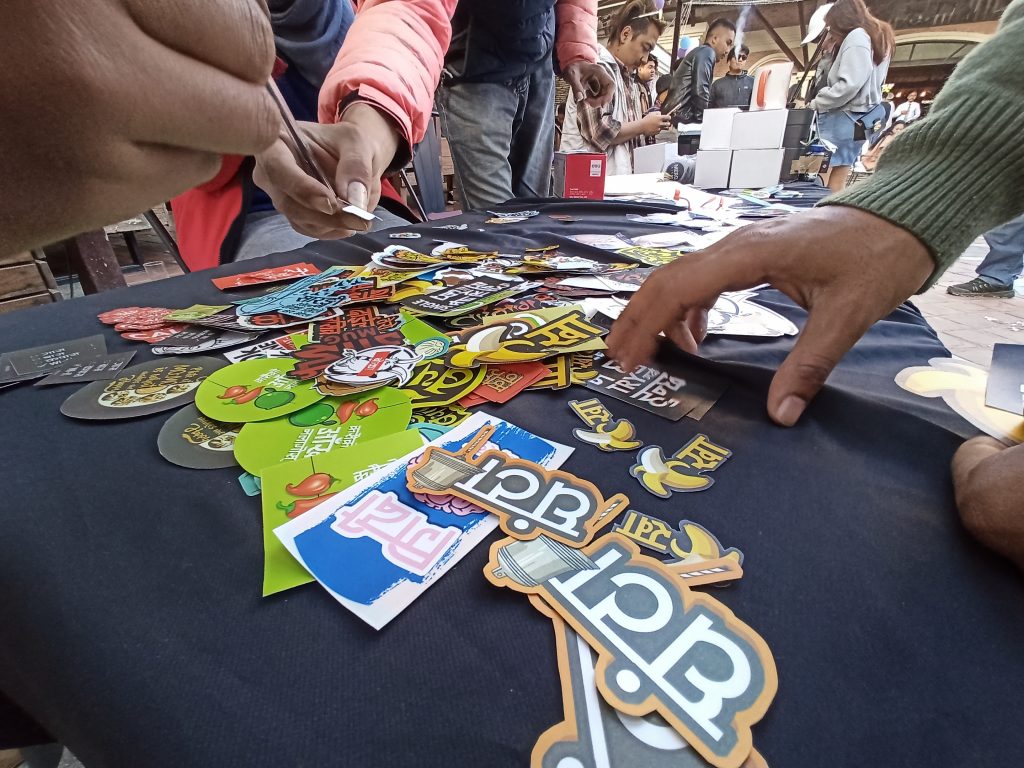
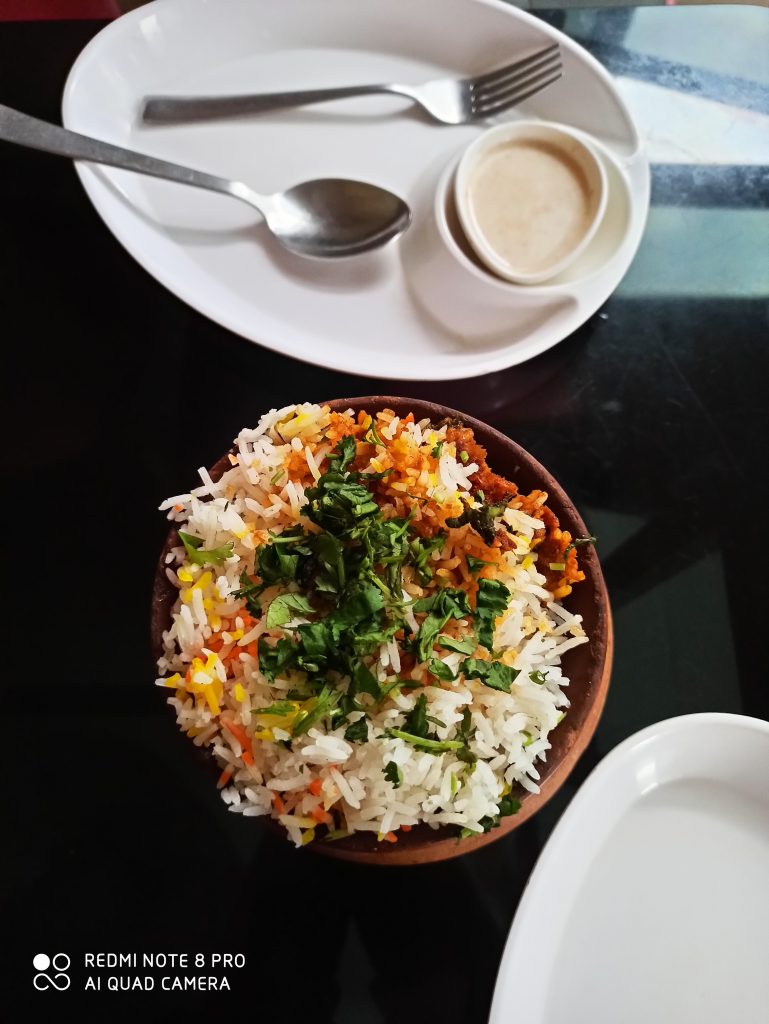
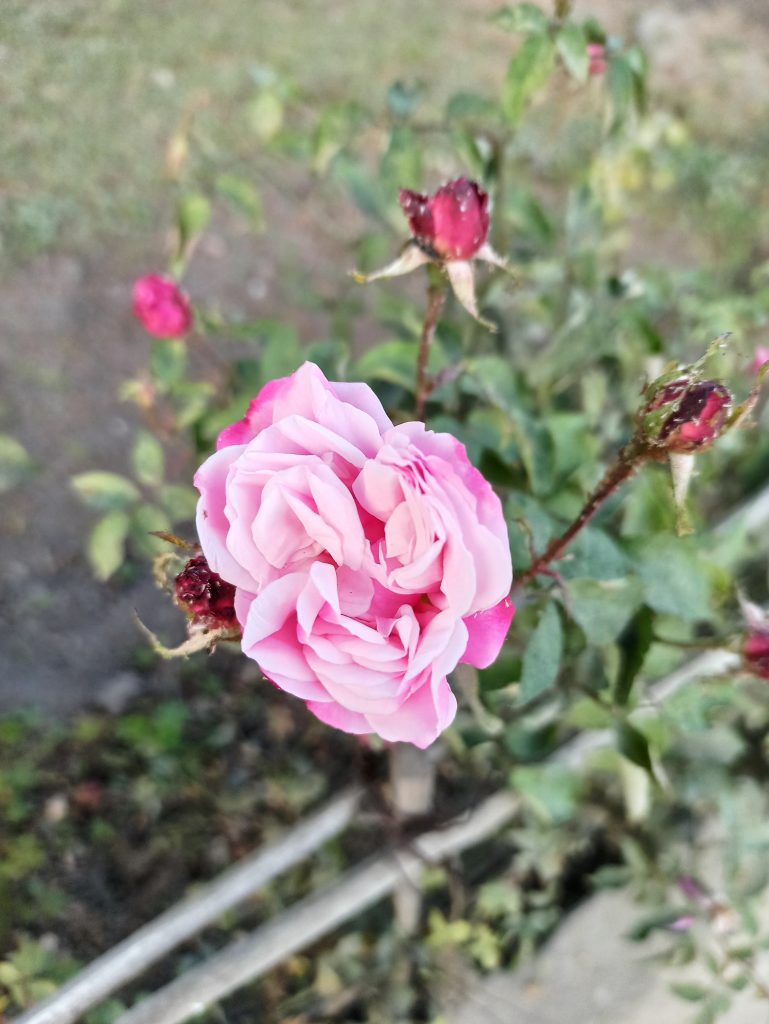
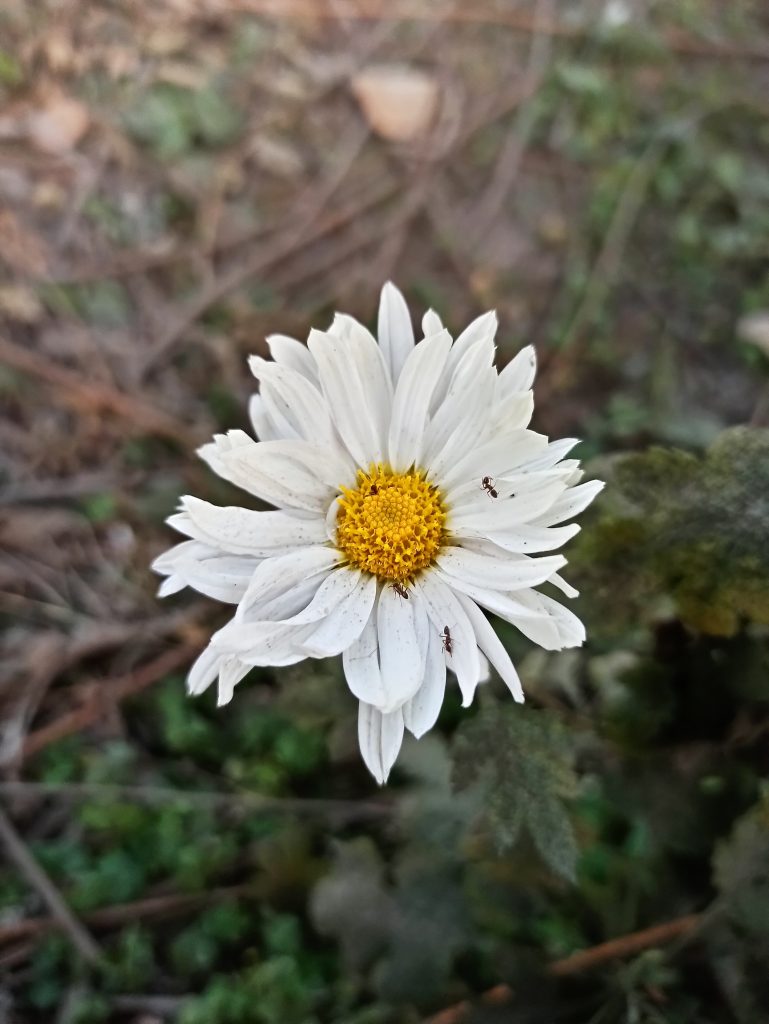


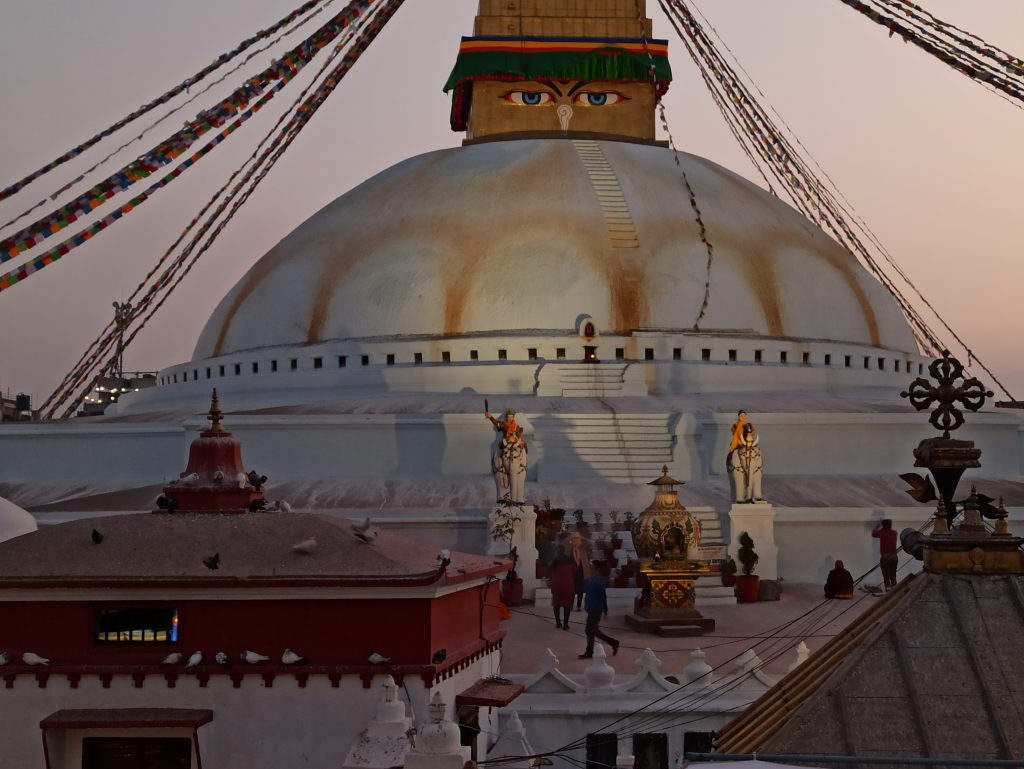
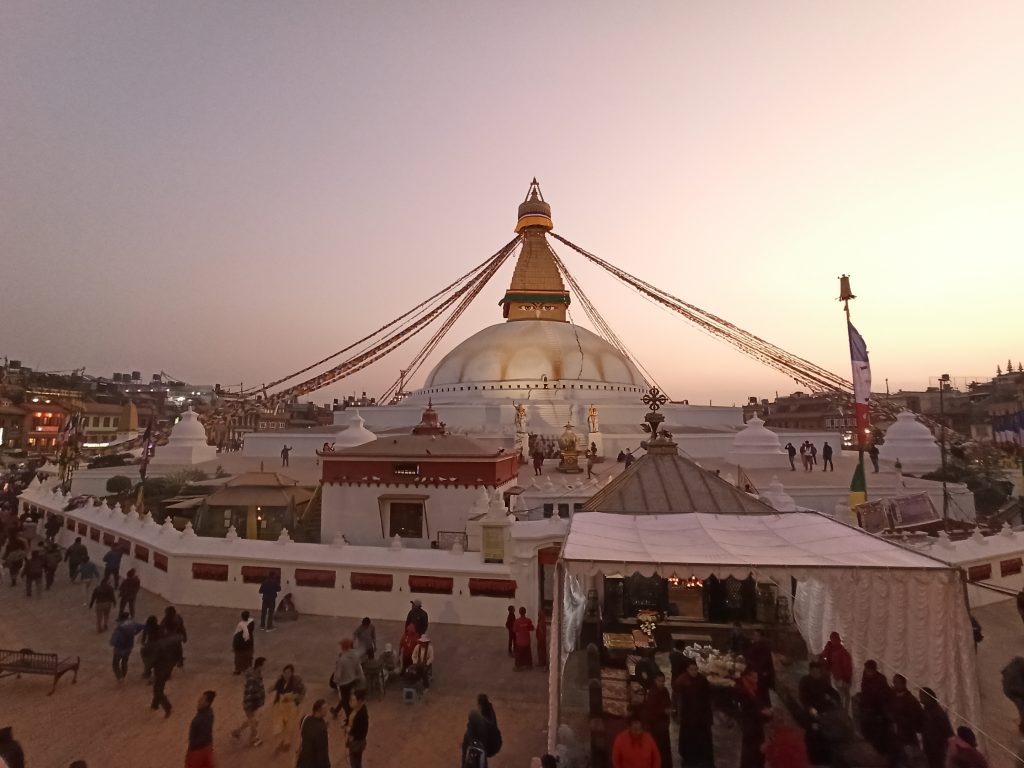
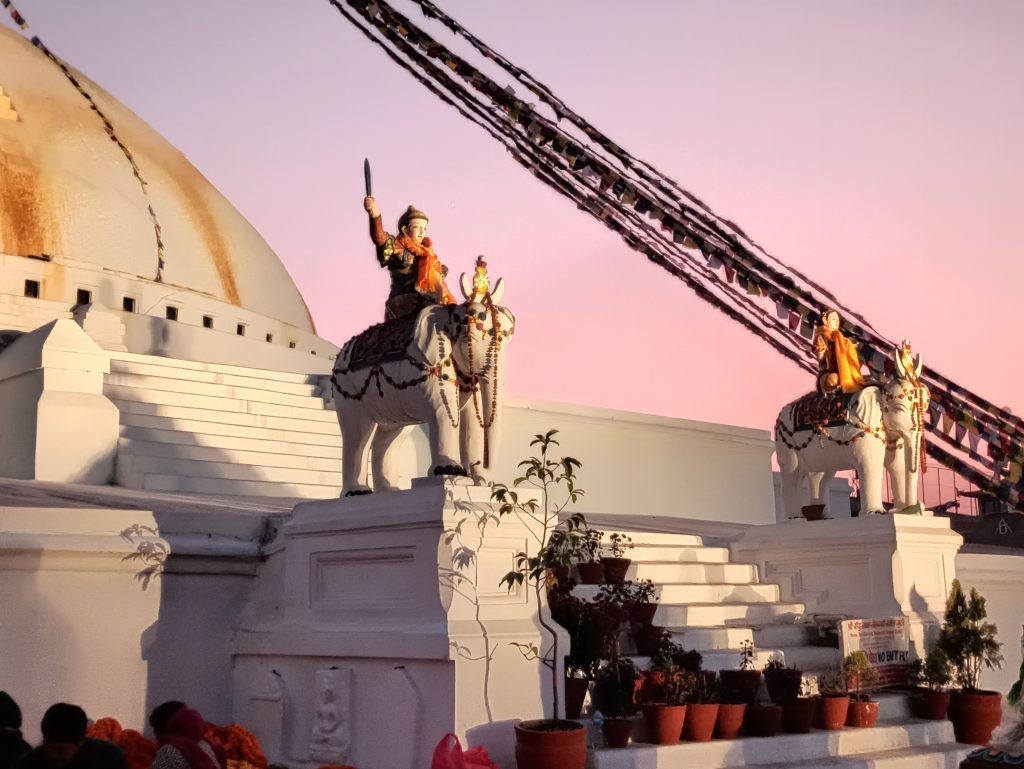
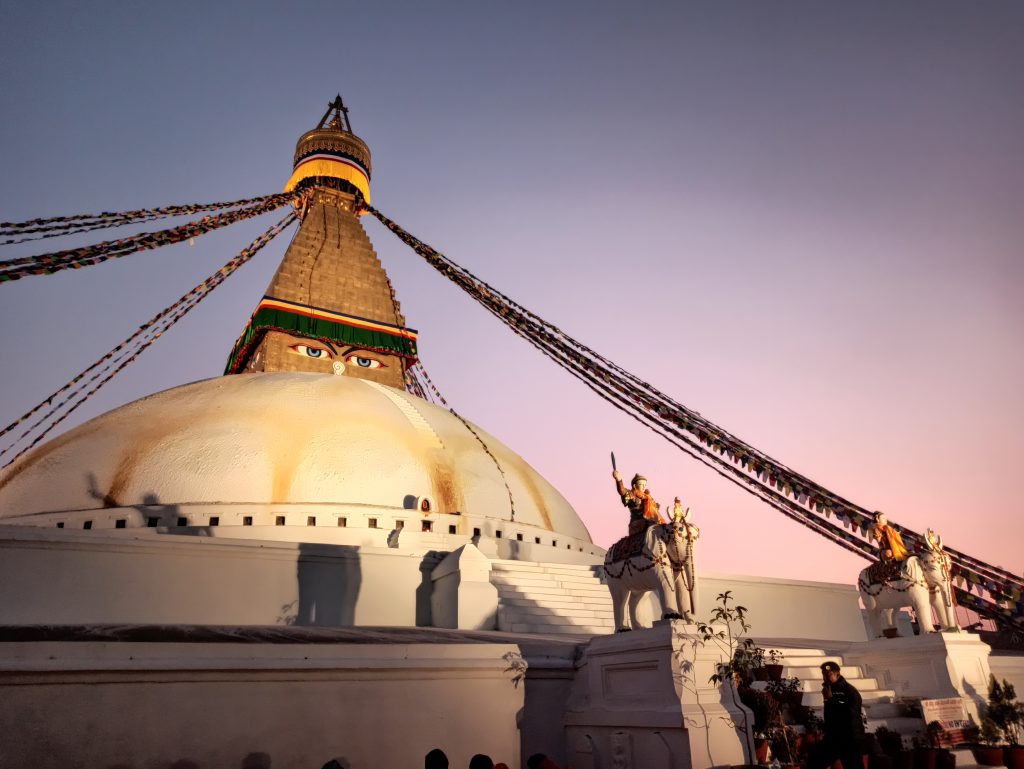
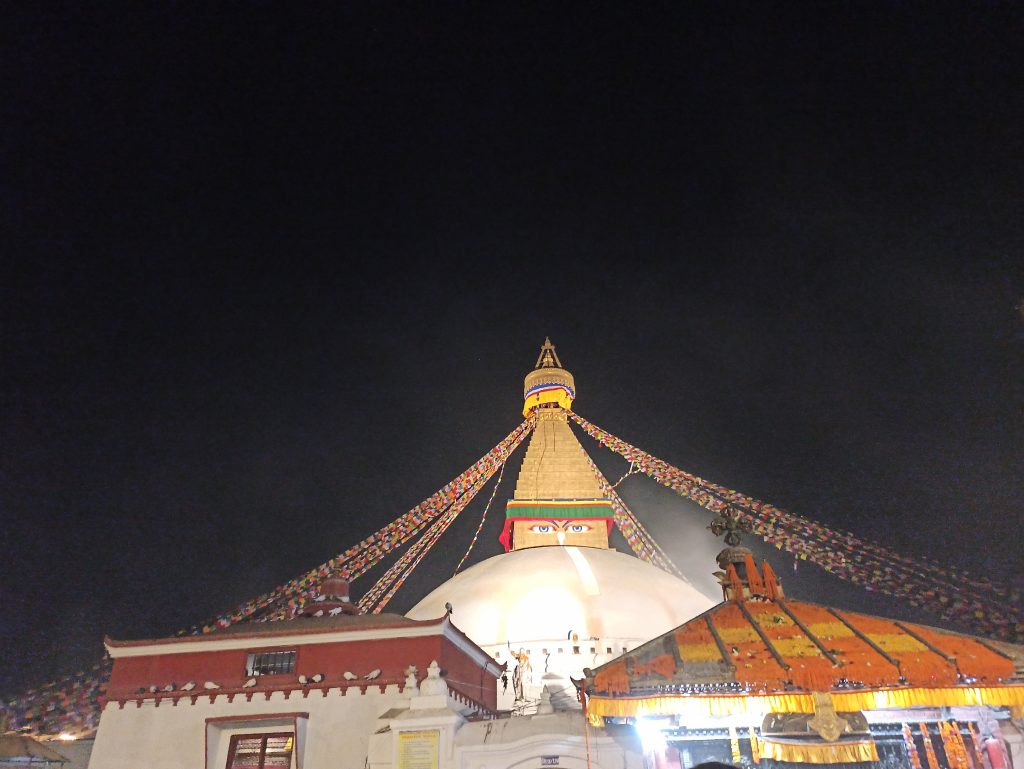
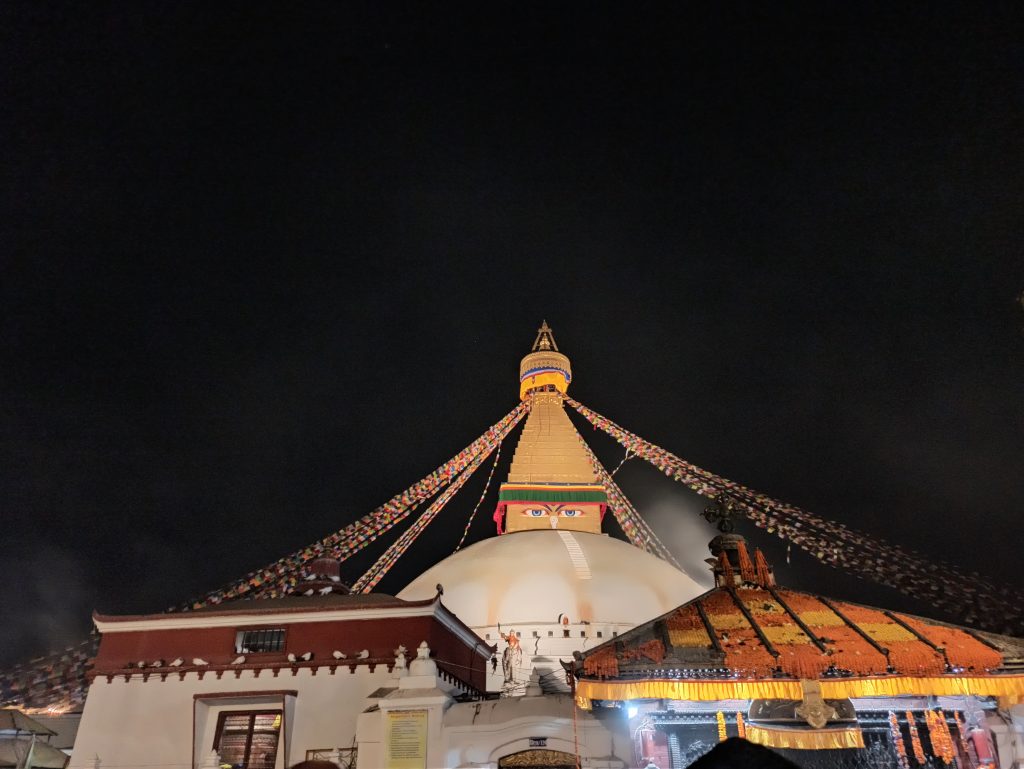
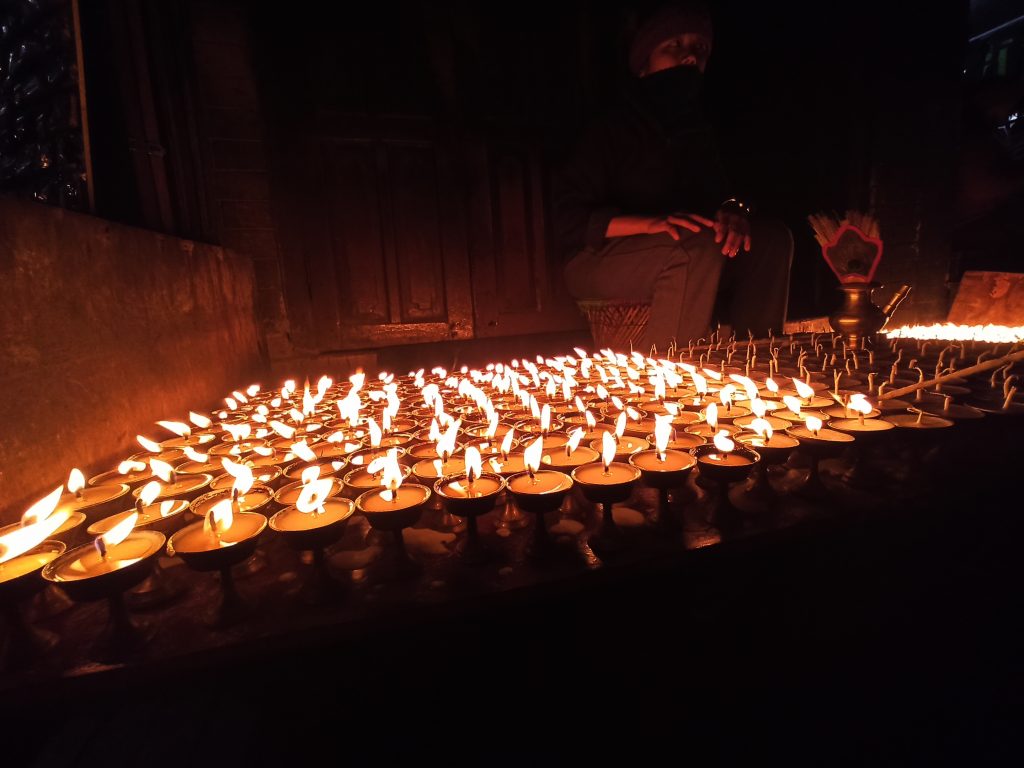
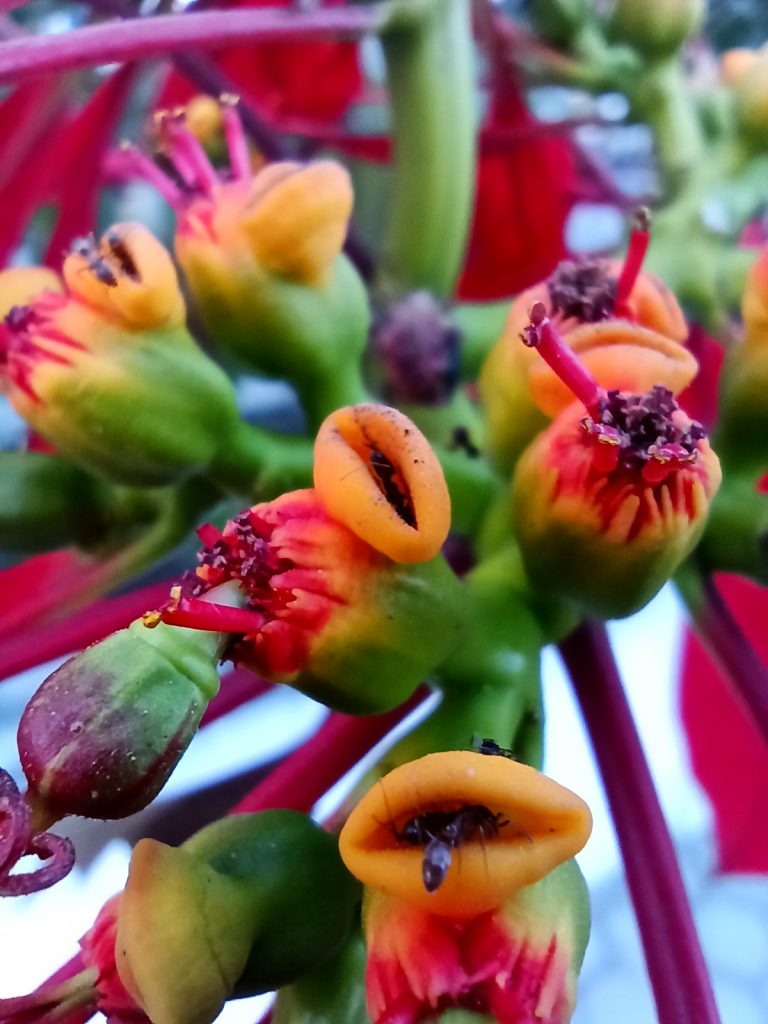
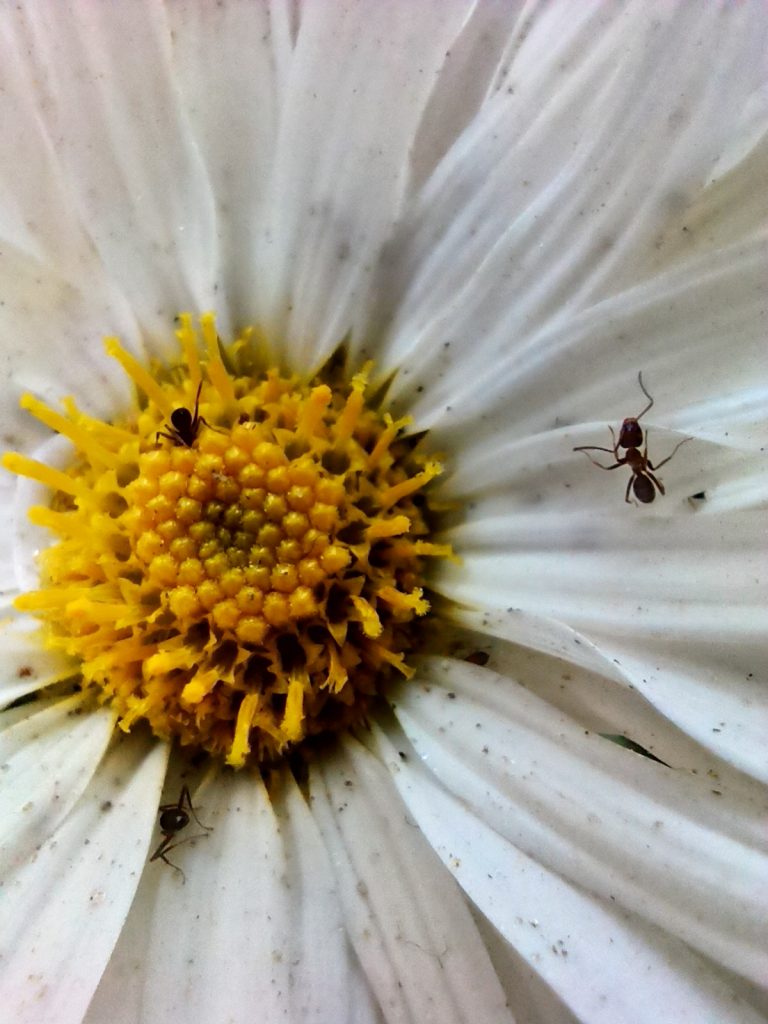
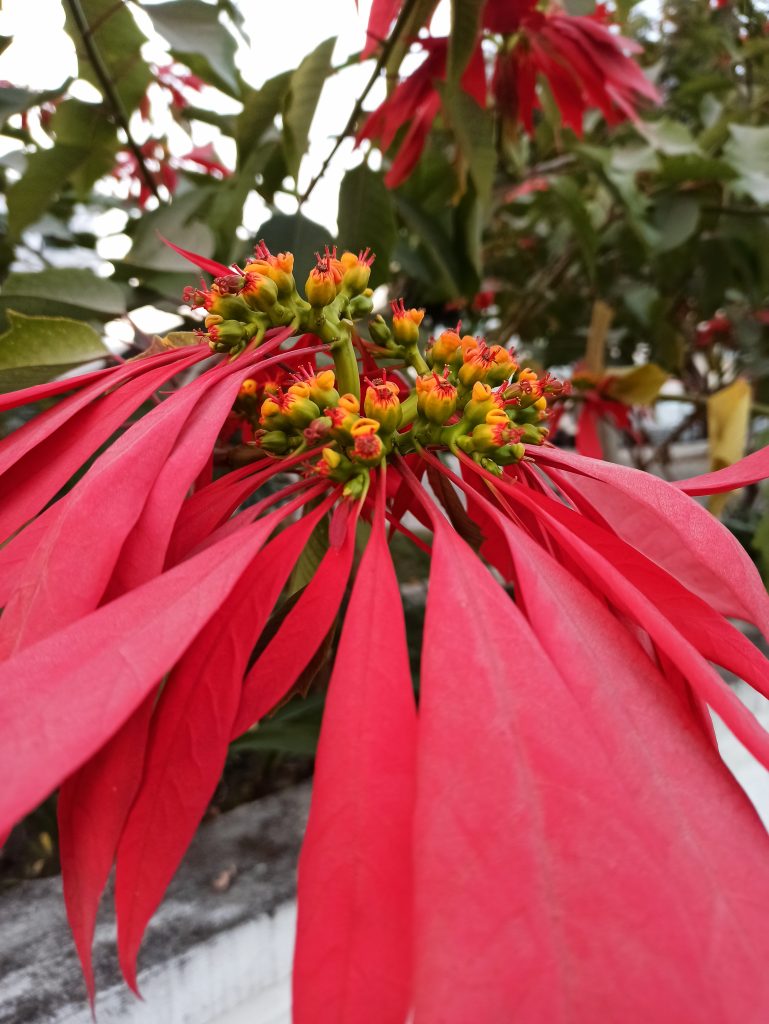

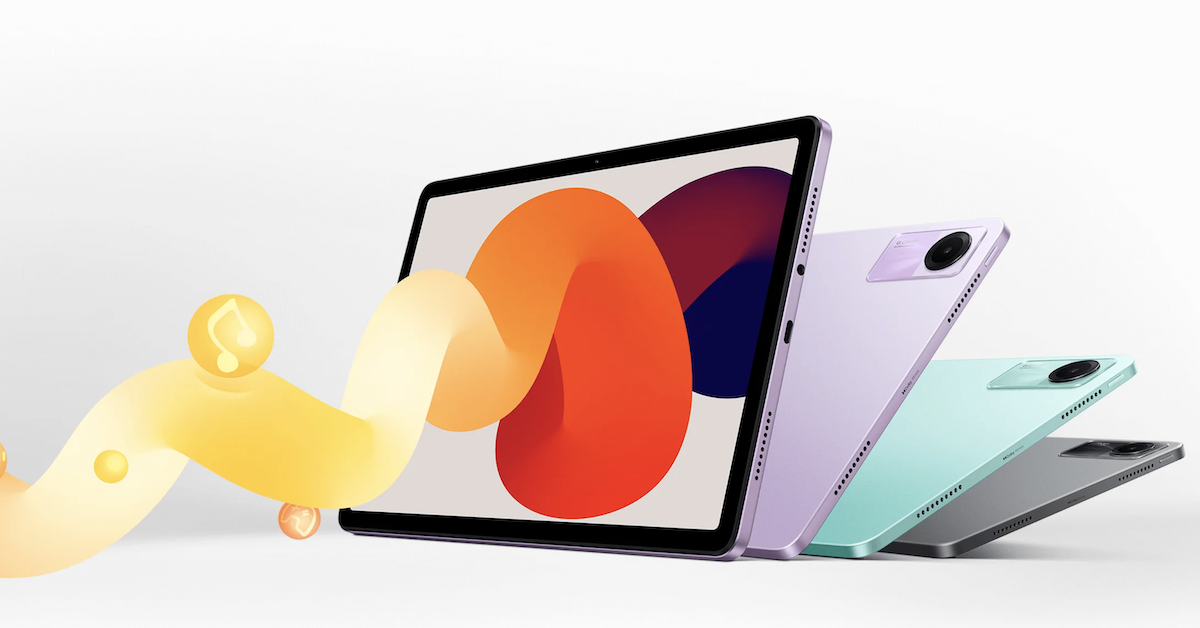
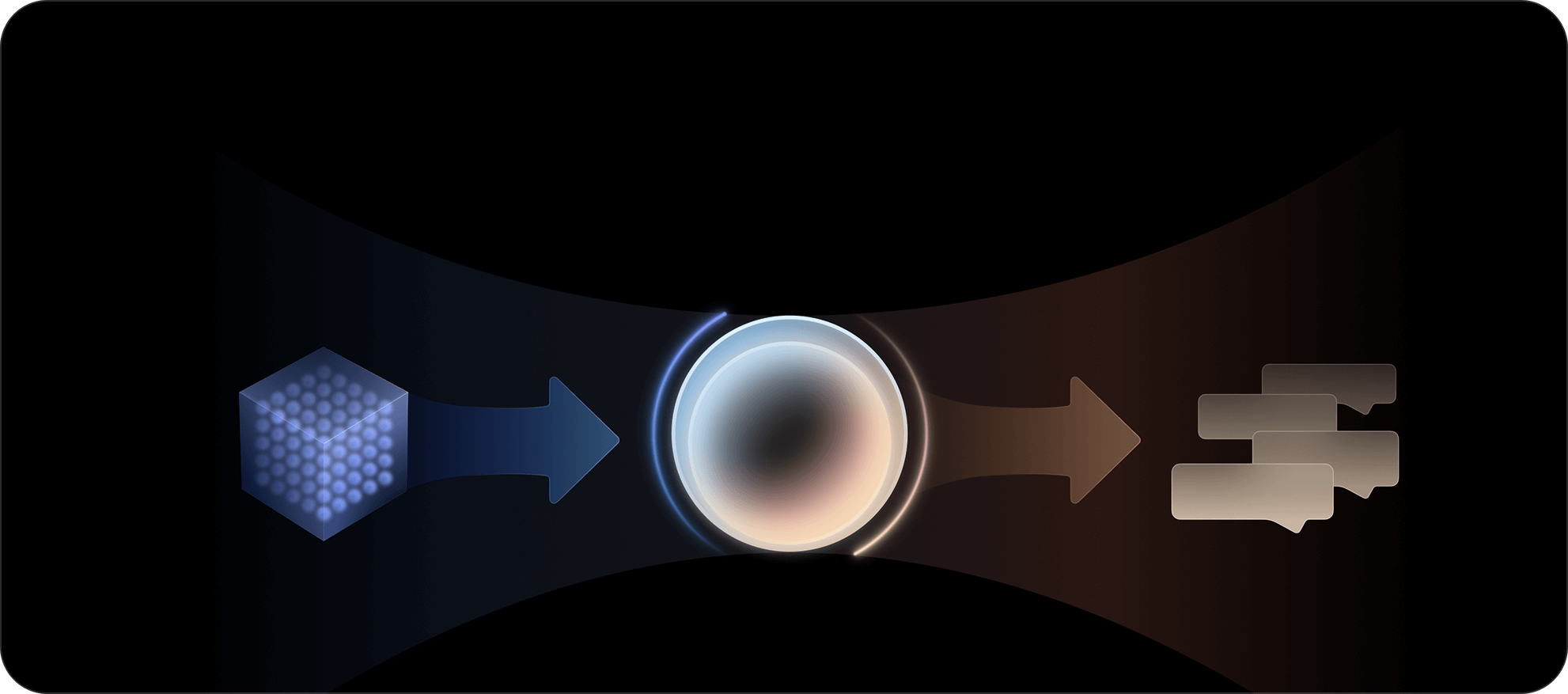
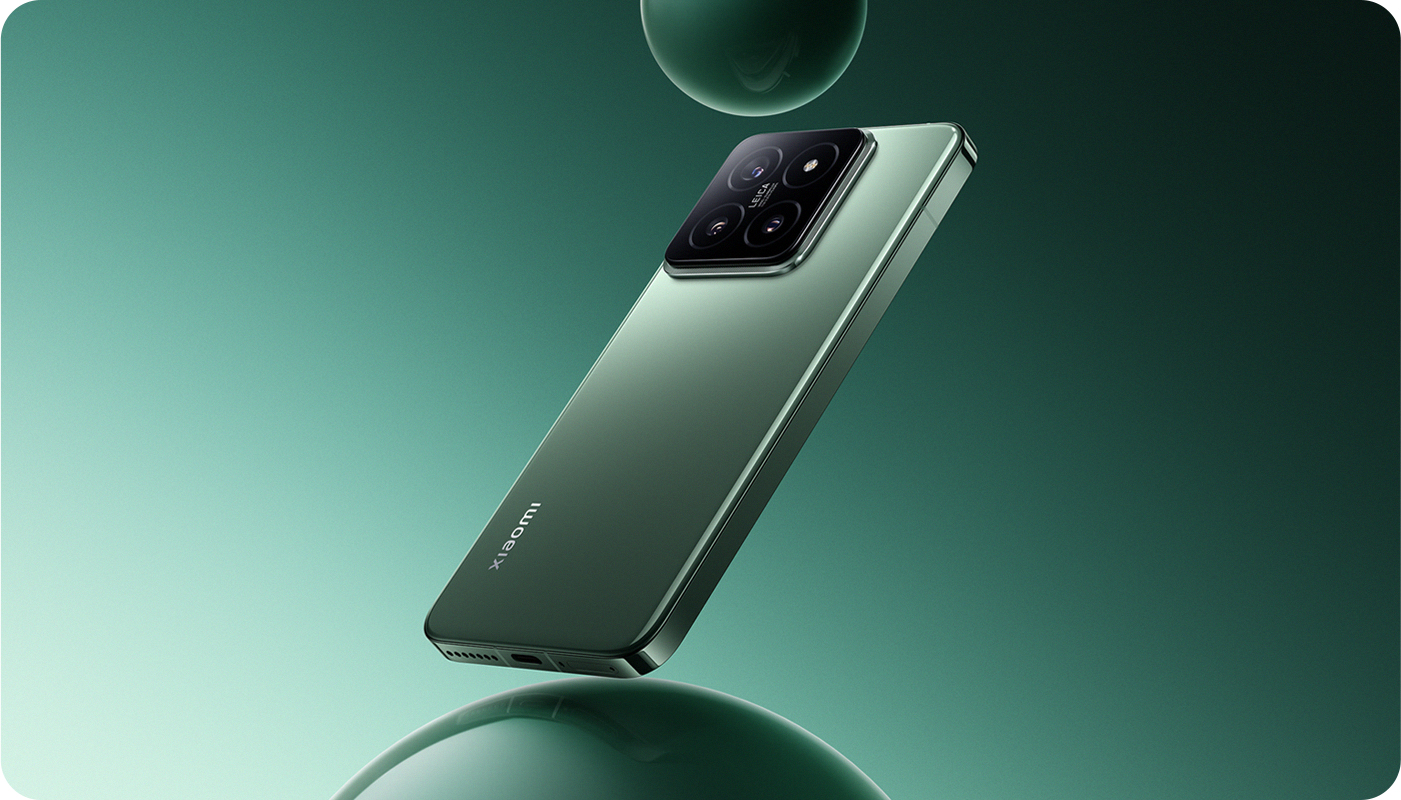
3 Comments
Pingback: Realme 5 Review: All Round Package in Budget – TechSathi
Pingback: Poco X2 Review: We Need a Poco F2 | TechSathi
Pingback: Redmi 8A Dual Debuts in Nepal with 5000 mAh Battery at Rs. 12,999 | TechSathi